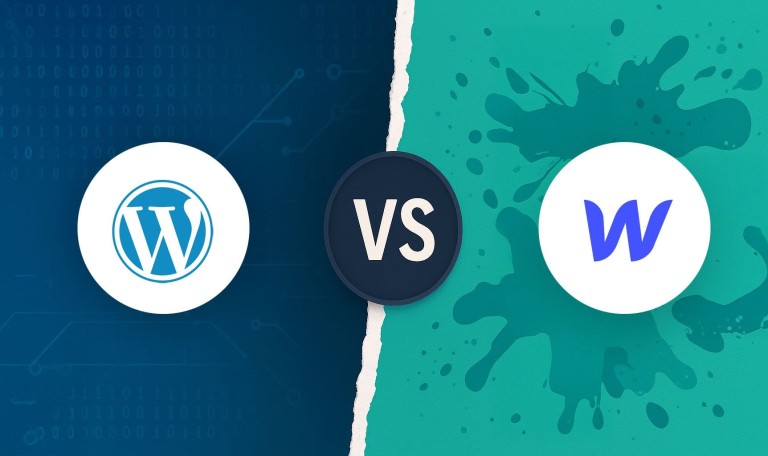Let’s be real — you didn’t build a website to sit there looking pretty. You built it to bring in business.
You wanted it to do something. Generate leads. Book clients. Sell stuff. Maybe even make your phone ring (remember when people used to call?).
But here we are. Your website is collecting digital dust while your competitors are out there getting inquiries left and right.
So, what gives?
Let’s talk about why your website might not be pulling its weight, and how WordPress lead generation systems can turn it into the high-performing lead engine it was meant to be.
1. Your Website Looks Great… But Acts Lazy
Design without direction kills conversions.
We see it all the time: the “pretty but pointless” website. Gorgeous hero image, sleek animations, dramatic headlines like “Welcome to Innovation.”
Cool. But innovation in what? And how do I buy it?
Your website should be more than digital wall art. It should greet visitors, explain your value in plain English, and guide them like a friendly salesperson who knows when to talk and when to hand over the pen.
That’s where WordPress shines; you can actually build systems around your content: forms that route leads to your CRM, follow-up automations, pop-ups that don’t make people want to throw their phone… all without needing to sell your soul to a drag-and-drop template.
Sure, Webflow, Squarespace, Wix etc. all have webforms and basic integrations. You can collect emails, send confirmations, maybe even "seamlessly" connect to a CRM if you jump through enough hoops. But here’s the difference: in WordPress, those pieces don’t just exist, they work together and scale with you.
On other platforms, your form, your automation, your blog, and your analytics all live in their own little boxes. Want to customize the user journey? You’ll hit a wall fast — or worse, you’ll end up duct-taping three different tools together that don’t actually talk.
With WordPress, you can build real systems.
2. You’re Talking to Everyone (Which Means No One)
Generic messaging is the fastest way to lose real leads.
If your homepage reads like “We provide solutions for businesses of all sizes in every industry”… well, congratulations, you just said nothing.
Your site needs to sound like you’re talking directly to your best client — not shouting into the void.
WordPress gives you the flexibility to create tailored landing pages for each target audience, product, or region.
Unlike Webflow, Squarespace, or other “visual-first” builders, WordPress isn’t locked into a single design system or rigid template structure. You’re not fighting your CMS every time you want a different headline layout, custom form logic, or ad-specific CTA.
Here’s the difference in practice:
Each page feels personal. Each one converts better.
3. You’re Relying on Hope Instead of SEO
Google doesn’t reward wishful thinking — it rewards consistency.
Posting a few blog articles and praying for Google to notice is not a strategy. That’s like tossing a message in a bottle into the ocean and hoping Jeff Bezos finds it.
The truth: search engines reward sites that consistently produce helpful content. And that’s the heartbeat of WordPress.
It started as a blogging tool — and that DNA is still what makes it unbeatable for SEO. WordPress was literally built to publish, organize, and index content in a way that search engines love. Clean URLs, semantic markup, dynamic sitemaps, easy image optimization — it’s all baked in.
Even as it evolved into a full-scale business CMS, WordPress never lost that foundation. While other platforms bolt on blogging as an afterthought, WordPress integrates it into the core. You can go from idea to indexed article in minutes — and that agility compounds over time.
Add an SEO plugin like Rank Math or Yoast, and you’ve basically got a marketing department that never sleeps.
You’re not just guessing about metadata or schema — you’re guided through every optimization in real time. And because WordPress gives you full control over your code, structure, and integrations, you can implement advanced SEO strategies (like custom taxonomies, internal link automation, and structured data) that closed-source platforms simply don’t allow.
What other CMS even comes close?
Squarespace and Wix look polished, but their SEO control is surface-level. Webflow gives you nice front-end design, but every structural tweak — redirects, sitemap customization, canonical tags — feels like wading through molasses. Shopify’s SEO capabilities are fine if you’re purely e-commerce, but the second you want deep content strategy, it becomes a brick wall.
WordPress wins because it’s not boxed in. You can publish endlessly, customize deeply, and adapt to every algorithm update. And that’s the real SEO game: consistency and evolution.
Of course, the caveat: WordPress gives you the tools — but you still have to use them.
SEO isn’t set-and-forget. You have to publish regularly, optimize for readers and search engines, keep plugins and performance in check, and stay up to date with changes in Google’s ranking criteria. But when you do, WordPress pays dividends no other CMS can match.
4. Your Website Is a Silo, Not a System
Disconnected tools = disconnected data = lost opportunities.
If your contact form sends leads to a Gmail inbox you check “sometimes,” we need to talk.
Your website shouldn’t live in isolation. It should feed data into your business — your CRM, your newsletter platform, your analytics tools, your ad tracking. When those systems talk to each other, you stop guessing and start optimizing.
This is where WordPress absolutely crushes closed platforms.
It’s built on open standards, not walled gardens. That means almost every modern tool — from HubSpot and Salesforce to Mailchimp, Notion, Airtable, Slack, and even custom ERPs — already has a direct integration or API connector ready to go. You’re not stuck embedding clunky iFrames or paying for “premium integrations” that only sort-of work.
Other CMS platforms?
They’re still playing catch-up. Webflow and Squarespace look slick, but their integration libraries are limited and often rely on brittle third-party middleware. Shopify’s ecosystem is powerful for e-commerce, but step outside retail and things get awkward fast.
Meanwhile, WordPress has a plugin ecosystem that’s been tested in every business scenario imaginable.
If you want leads automatically piped into your CRM, synced with your email segments, and tagged based on behavior — you can do that natively. And because it’s your data and your infrastructure, you’re not building your business inside someone else’s marketing app.
In short: WordPress lets you create a real system, not a stitched-together stack of borrowed tools.
5. You Built It Once… and Never Looked Back
A website isn’t a monument — it’s a living, evolving system.
Websites age like milk, not wine.
If your site hasn’t changed in three years, your design might still look okay — but your content, user experience, and SEO are probably out of sync with how people search and buy today.
That’s the beauty of WordPress: you don’t have to start over to evolve.
Its modular structure means you can redesign in layers — swap layouts, refresh sections, rebuild pages, or roll out new campaigns — without bulldozing your entire foundation.
Of course there's a caveat:
No platform lasts forever without maintenance. Even on WordPress, technology moves fast — PHP versions, security protocols, plugin standards, design languages — all evolve. A full redesign or rebuild every 5–7 years is realistic and healthy, not a failure. It’s like remodeling a house on the same solid foundation.
What sets WordPress apart is that your investment compounds.
When you do eventually modernize, you’re not stuck migrating data out of a closed system or rebuilding content from scratch. Your URLs, SEO equity, and data structure all stay intact — because you own them.
By contrast, platforms like Webflow, Squarespace, or Wix handle most of that “tech maintenance” behind the curtain, which sounds convenient — until you hit their limits. You can’t fully access your code, export your content easily, or adapt to new technologies outside their ecosystem. They might save you a few headaches early on, but they’re a dead end once you outgrow them.
So sure — everyone has to renovate eventually.
But with WordPress, you’re renovating your own property, not the landlord’s apartment.
Want a site that actually brings in leads?
Let’s turn your website into the hardest-working member of your sales team — powered by WordPress, strategy, and zero fluff. Let's talk about your growth plan.



